Paris-Roubaix: looking ahead to a Sunday in Hell
If there’s one race that epitomises racing on the cobblestones, it’s Paris-Roubaix. We look ahead to this weekend's race, and at the secteurs pavé that could define its outcome
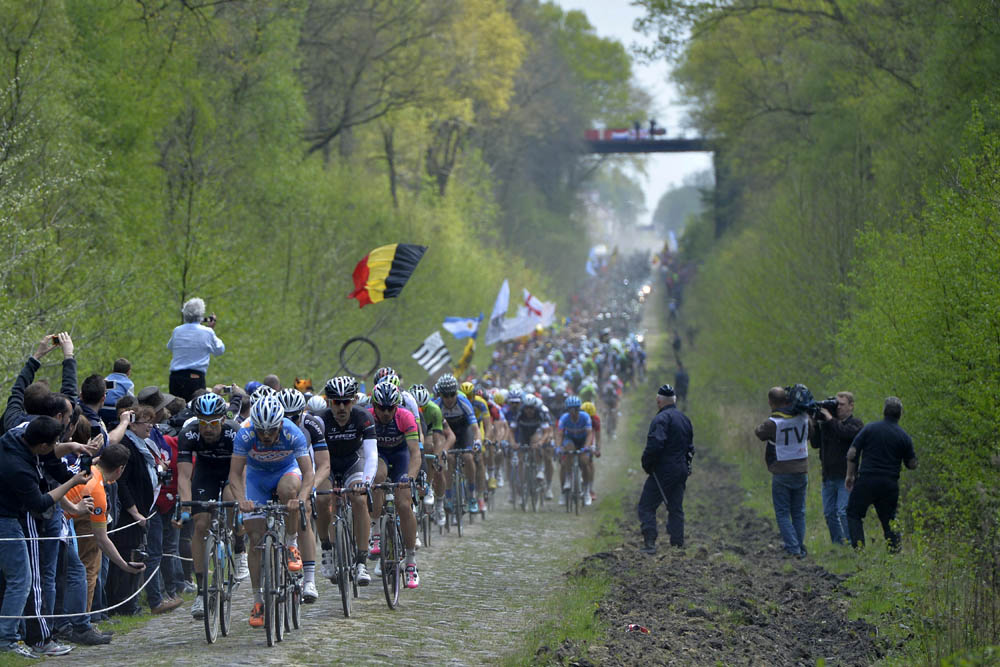
Graham Watson
One Sunday…
If there’s one race that epitomises racing on the cobblestones, it’s Paris-Roubaix. When organisers made their first tentative course reconnaissance in the immediate aftermath of the First World War, so devastated by four years of industrial warfare was the landscape along the route from the capital to the Belgian border that they gave the 1919 race the name ‘The Hell of the North’. It stuck, thanks both to the apocalyptic conditions of almost every edition of the race since, and to Jørgen Leth’s iconic film of the 1976 race: A Sunday in Hell.
>>> Bradley Wiggins will win Paris-Roubaix, says Luca Paolini
Even at 21, Florian Sénéchal has an expertise that is the envy of any would-be Classics contender. The Frenchman has lived his whole life just a few miles away from the opening cobbles of the race in a small village to the east of Cambrai.
“When I started racing and when I rode Paris Roubaix Juniors, I started getting stronger and I found I liked them [the cobbles],” he says. “I was never the best sprinter or the best climber, but on the pavé I was the best rider.”
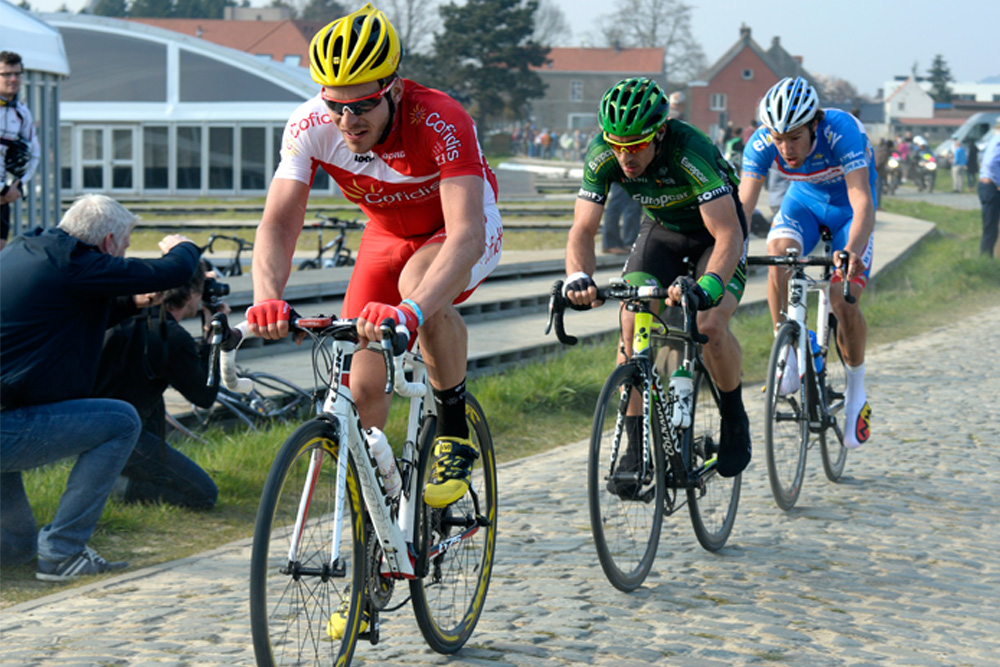
Sénéchal was not unique in riding the Roubaix cobbles one day last spring before his debut in the professional edition of the race for his Cofidis team. What was unique, however, was that he did them all. Alone. It took him eight hours.
“I was young, I hadn’t raced Paris-Nice or Milan-San Remo. It was just about training. And checking equipment, what I might need in terms of wheels, tyre pressure and so on.
“I already know where to put the wheels, where the tricky stones are, how to take the corners, how to come out of the corners.
Get The Leadout Newsletter
The latest race content, interviews, features, reviews and expert buying guides, direct to your inbox!
“The other riders know them, but I know them by heart.”
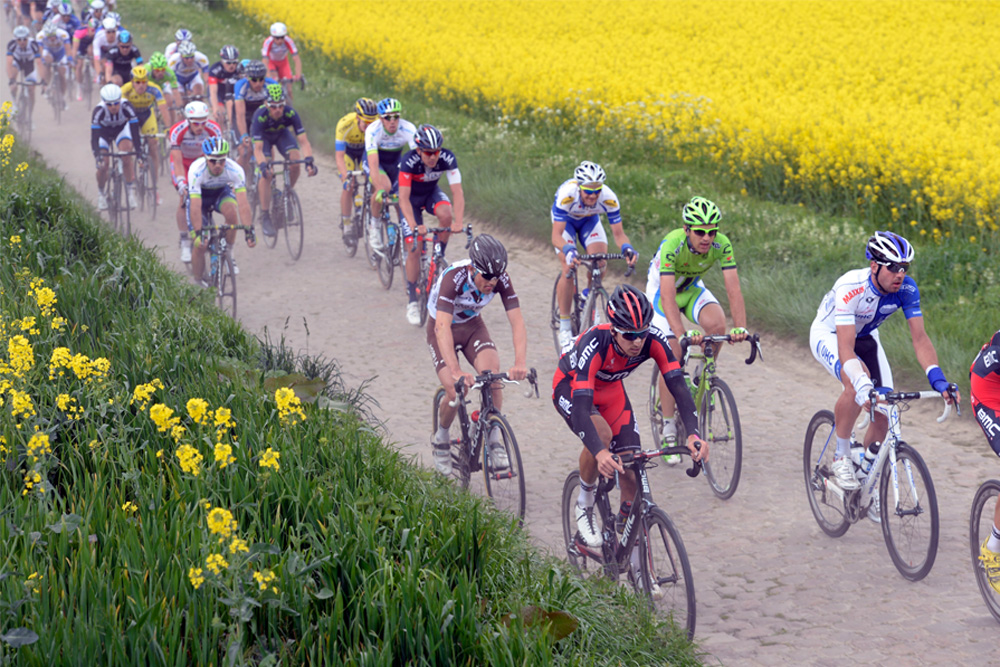
Long stretch
Sénéchal’s neck of the woods is alongside the lengthiest secteurs pavés used in Paris-Roubaix, those that open the race south of Valenciennes after around 100km of racing.
On a typical day it’s a stark, silent landscape; there are few trees to break the horizon of bleak beet fields and French WWII pillboxes. There’s no birdsong; few animals roam the fields. A cold wind marches in from the Channel.
>>> Ten times bad weather made bike races even more epic
The only disturbance comes from a zealous French farmer defending his right to a lunch-break by refusing to move his tractor from blocking the single-track road.
Return on one Sunday in April and these cobbles are the scene of the most stressful point of the whole race: a full peloton, thundering along into a narrow cobbled corridor, at full pelt.
“It’s stress,” Sénéchal says. “Stress because you’re riding quickly, it’s very dangerous… and it’s very nervous. Lots of stress. In fact its stressful all the way to Arenberg, then you have a bit
less stress.”
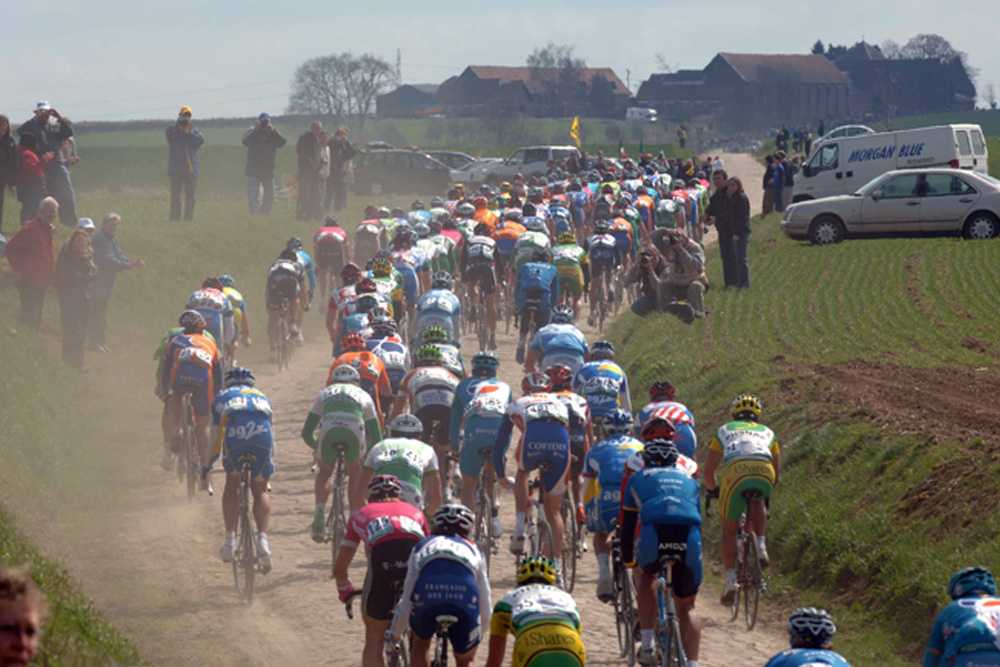
The longest sector of the whole race — in fact of any Spring Classic at all — is the road from Quiévy (a silent, unremarkable French village) to Saint-Python (a silent, unremarkable French village) which stretches out over 3,700m. The sector is far too early in the race to be where the race is won — it’s most commonly the second or third stretch of the day — but a rider can certainly lose the race here. It is hard. Besides the patches of slippy, sandy mud, the small changes in gradient combined with a blunt wind channelled down the embankments makes the experience like trying to move a tumble dryer on spin cycle up a flight of stairs. Anyone who says Paris-Roubaix is a flat race is just lying.
>>> MTN-Qhubeka handed Paris-Roubaix wildcard
Sénéchal made it through on his senior Roubaix debut in 2014, but two mechanicals (a rider swerved and put their rear mech in his front wheel, and then his chain jammed) in the final two hours of the race put paid to his ambition of a top 20; he finished 49th in the velodrome before lobbing his bike in frustration into the mechanics’ truck.
“I felt good, I had a good power,” he says. “But in Paris-Roubaix, one error is all you can afford. I had two, and that was the end of it.”
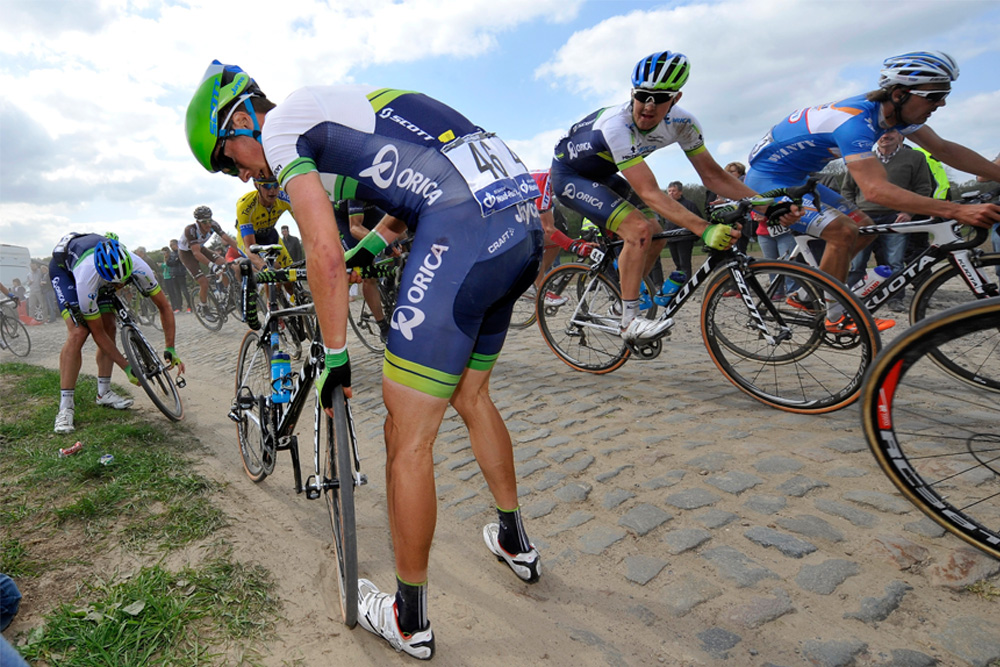
The next big thing
Besides an annual festival where they parade enormous effigies around the village, Paris-Roubaix is the biggest thing to happen in Troisvilles all year. The same could be said about its cafe, ‘Chez Françoise.’ On a normal day a handful of locals drink aperitifs and read the papers, but on race day its eponymous proprietress Françoise Santerre cooks up omelettes for a cavalcade of journalists and race organisers before they head out to inspect the course.
As a member of the ‘Friends of Paris-Roubaix,’ a voluntary organisation whose members repair the pavé (and who call themselves ‘the convicts of the cobbles’), Santerre enjoys working hard to keep the race alive here.
“I’m not saying they have to be cleaned and polished all the time, but I keep in touch with the local farmers to make sure that they are looking after the pavés,” she says. “We’re proud of the race, but we have to fight to keep it alive.”
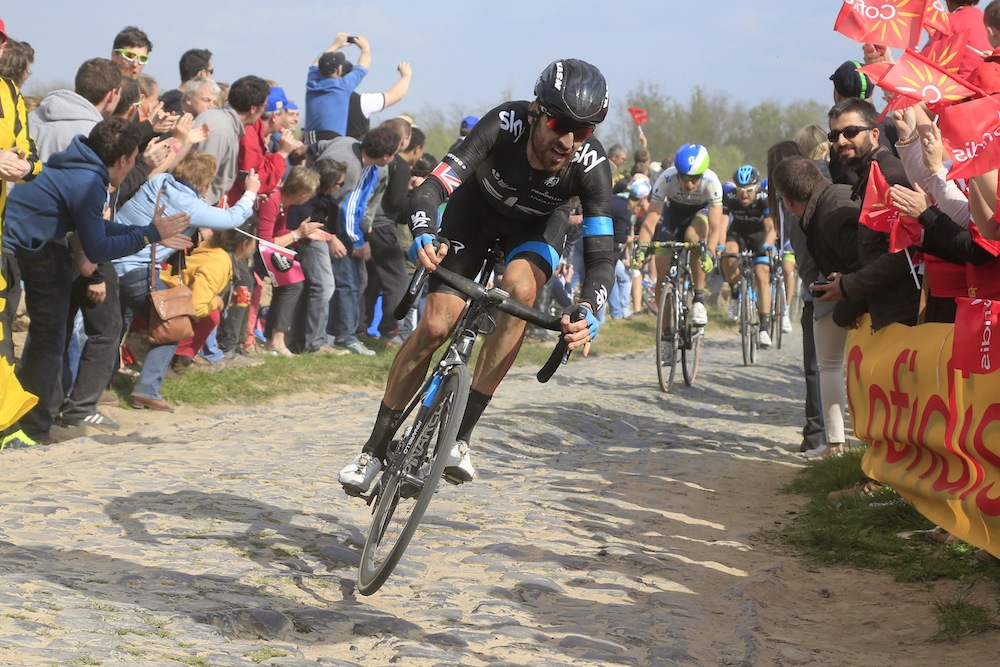
Cheers and tears in Roubaix
There are a few sectors in Paris-Roubaix that aren’t even pavé,” says former French pro Cédric Vasseur. “They are just tracks used by tractors. You need to be an acrobat in order to ride a bike over them.”
Vasseur’s observations are apt. When riding the race in 2001 his then Cofidis team-mate, the late Philippe Gaumont, split his femur in two in a crash on the cobbles of the Arenberg Forest. It took place a matter of metres away from where, three years earlier, Johan Museeuw smashed his knee to smithereens, an injury that almost caused him to lose his leg to gangrene.
>>> Wiggins planning to be ready for anything at Paris-Roubaix
Paris-Roubaix is not pretty. The cobbles themselves are decidedly ugly pontoons of pavé between farms and hamlets floating alone in a bleak landscape. When they’re dry they spit up grit, dust and sand into your face. When they’re wet, they drip with glossy mud and potholed puddles. Goodness knows what happens when it snows.
After almost 30 sectors of cobbles totalling upwards of 50km, the race throws up the ultimate irony: a smooth finish on an outdoor velodrome in Roubaix. To throw salt in the wound (and, given the state of riders’ hands when they finish, this can be taken literally) you get a rock for winning, which the victor then has to clean and jerk into the air.
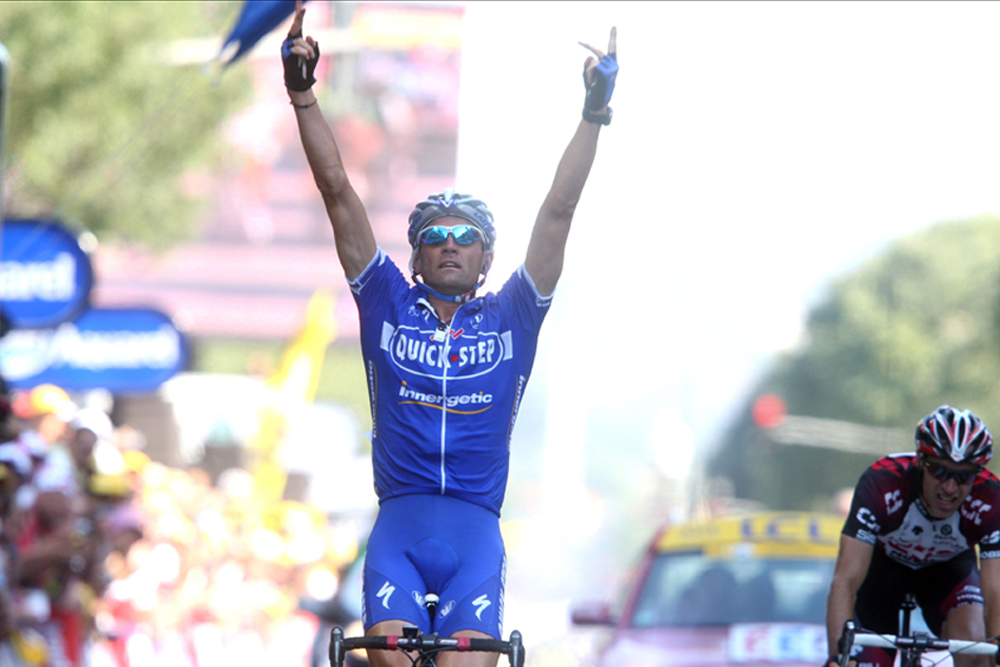
A race like no other
They say you should never meet your heroes. But simply step onto the Roubaix cobbles or into the track centre when the leader enters the velodrome, and in every aspect Paris-Roubaix exceeds its reputation. Florian Sénéchal won the junior race in 2011 and knows that the experience of riding solo into the velodrome is just as good as they say it is.
“You go so deep that when you get there you say it can’t be real,” he remembers. “But it is.
“Most of the time you never win what you want to win, but in the velodrome you have time to think, ‘you’re going to win, you’re going to win, it’s the most beautiful race and you’re going to win it’.”
Beautiful? Perhaps all that shaking has gone to his head.
“The Tour de France and Tours of Italy and Spain are all the same,” he adds. “Ok you have the Champs-Elysées, but Paris-Roubaix is special. I’d rather win one Paris-Roubaix than a Tour de France. There’s nothing like it.”
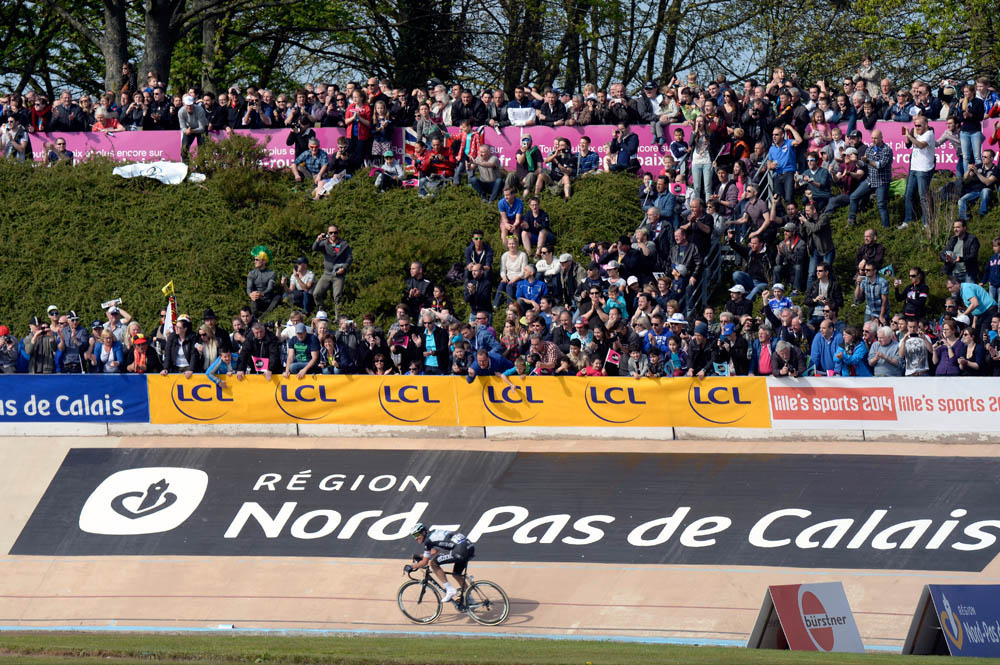
The man behind the modern Paris-Roubaix
Next door to the traditional outdoor velodrome in Roubaix is a brand new indoor track. It’s colloquially known as ‘Le Stab’, not in reference to the troubled town’s homicide rates but after a man: Jean Stablinski.
In the 1970s, faced with the asphalted demise of many of the traditional tracks between Paris and Roubaix, the race as we know it was at risk of disappearing entirely or, as the then director Jacques Goddet feared, becoming too easy. So Goddet sent his lieutenant Albert Bouvet to locate some good old-fashioned cobbles, with Bouvet knowing just the man.
>>> Paris-Roubaix route designed to attract Tour de France hopefuls
The son of Polish immigrants, Stablinski combined a career spent down the coal mines of the north of France with a glittering cycling palmarès including a World Championships, a Tour of Spain and four Tour de France stage wins. He helped Bouvet bring the race to its current route and, having worked underneath them, it was he who also identified the cobbles through the Arenberg Forest.
There are two further monuments to Stablinski on the route to Roubaix; one by the entrance to the Arenberg Forest and a second near his home, on the opening sector of cobbles from Troisvilles to Inchy, which he lived to see erected. The real monument to Stablinski, however, is the modern day race itself.
The decisive secteurs
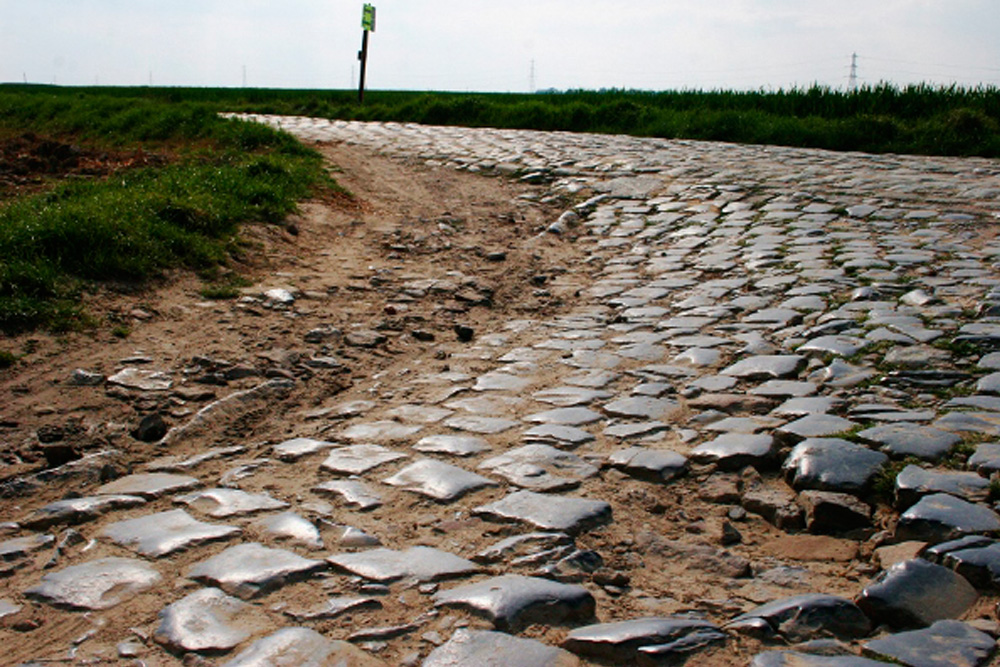
Carrefour de l'Arbre
Length: 2100m, Elevation: 2m, Toughness: 5/5
The cobbled sectors increase in their frequency as the race heads towards Roubaix, and the final big test comes here, at the site of the Battle of Bouvines exactly 800 years ago. The blocks of granite are widely spaced and abruptly crumble away or sink into the ground, or sometimes a row has been taken out to make way for a steel drainage pipe. It’s a brutal place, where many a Roubaix dream (and many a collarbone) has been shattered.
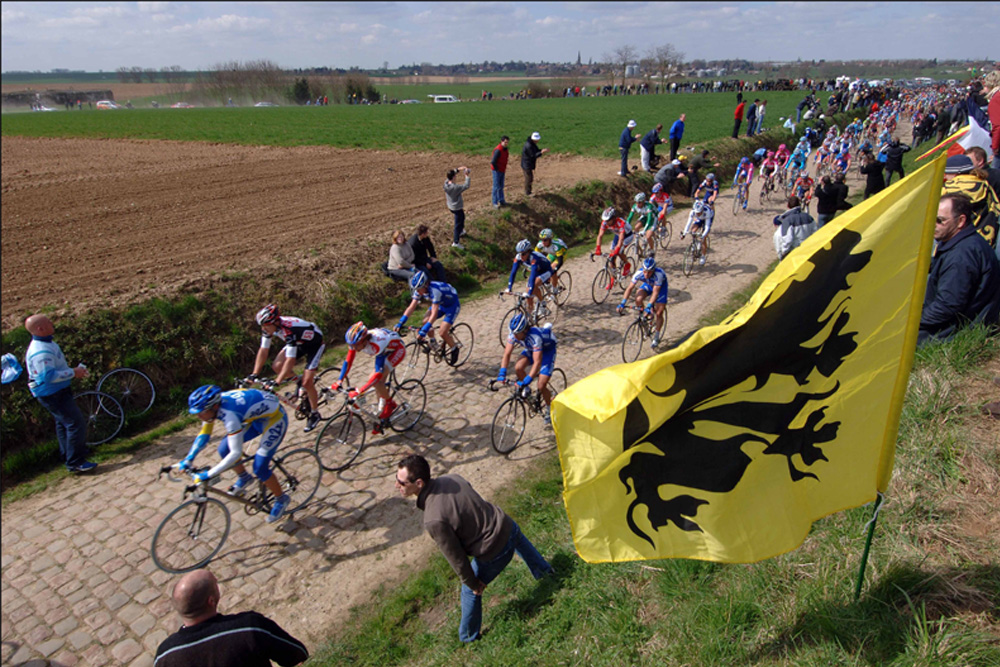
Quiévy to Saint-Python
Length: 3,700m, Elevation: 22m, Toughness: 4/5
Each year the cobbled sectors of Paris-Roubaix are graded according to difficulty. Like some sadistic hotel guide, five stars are reserved for the nightmare sections of the Arenberg Forest, Mons-en-Pévèle and Carrefour de l’Arbre. The sector from Quiévy to St-Python
is one of just four roads to regularly receive four stars.
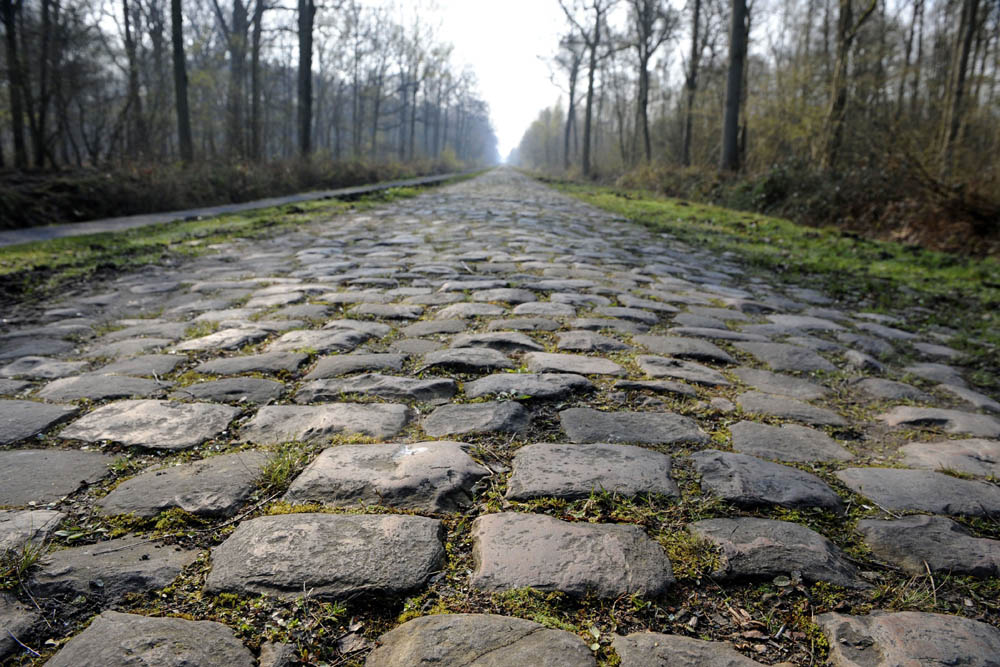
Arenberg Forest
Length: 2,400m, Elevation: -6m, Toughness: 5/5
The most treacherous of the Roubaix cobbles are nowhere near a place called Arenberg, nor is there a ‘berg’ to speak of on the flat forest road. The trouée, or trench, is named after the Duke of Arenberg, a board member of the mining company whose pits are sunk underneath the cobbles. The approach is fast and furious on a downhill runway past the mine buildings and riders hit the cobbles at speeds approaching 60kph. On a typical day the stones teem with little stag beetles, and each year organisers erect a barrier and plough the grass verge to corral riders onto the cobbles, where they find little more than a random jumble of rocks.

Thank you for reading 20 articles this month* Join now for unlimited access
Enjoy your first month for just £1 / $1 / €1
*Read 5 free articles per month without a subscription

Join now for unlimited access
Try first month for just £1 / $1 / €1
Richard Abraham is an award-winning writer, based in New Zealand. He has reported from major sporting events including the Tour de France and Olympic Games, and is also a part-time travel guide who has delivered luxury cycle tours and events across Europe. In 2019 he was awarded Writer of the Year at the PPA Awards.
-
 Gear up for your best summer of riding – Balfe's Bikes has up to 54% off Bontrager shoes, helmets, lights and much more
Gear up for your best summer of riding – Balfe's Bikes has up to 54% off Bontrager shoes, helmets, lights and much moreSupported It's not just Bontrager, Balfe's has a huge selection of discounted kit from the best cycling brands including Trek, Specialized, Giant and Castelli all with big reductions
By Paul Brett
-
 7-Eleven returns to the peloton for one day only at Liège-Bastogne-Liège
7-Eleven returns to the peloton for one day only at Liège-Bastogne-LiègeUno-X Mobility to rebrand as 7-Eleven for Sunday's Monument to pay tribute to iconic American team from the 1980s
By Tom Thewlis
-
 Man hands himself in to Belgian police after throwing full water bottle at Mathieu van der Poel during Paris-Roubaix
Man hands himself in to Belgian police after throwing full water bottle at Mathieu van der Poel during Paris-Roubaix30-year-old was on Templeuve-en-Pévèle cobbled sector when television pictures showed the bottle hitting him in the face
By Tom Thewlis
-
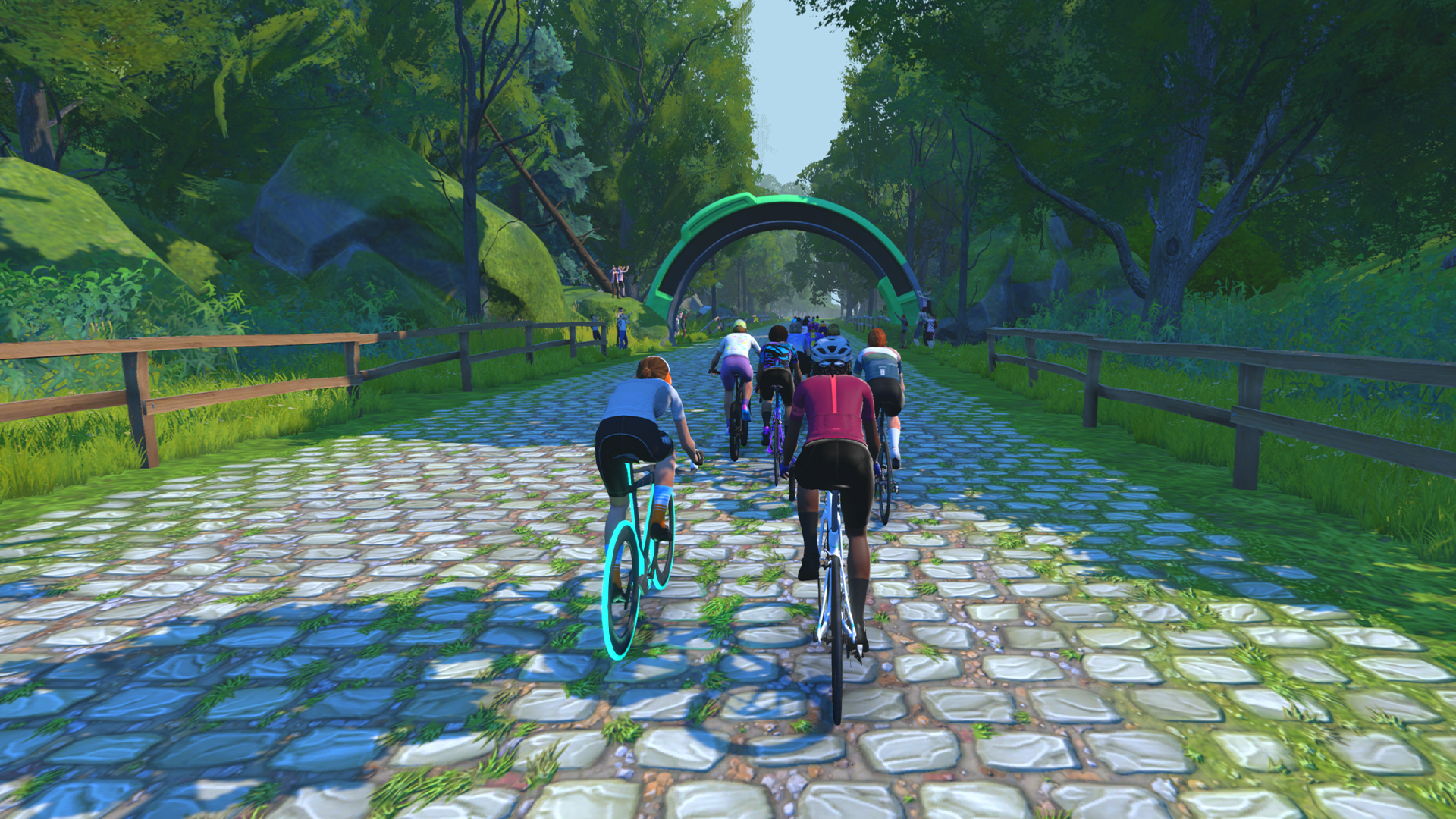 I rode Zwift’s new Paris-Roubaix route - how hellish was it?
I rode Zwift’s new Paris-Roubaix route - how hellish was it?The Hell of the North route has added virtual cobbles to the virtual training and racing platform
By Stephen Shrubsall
-
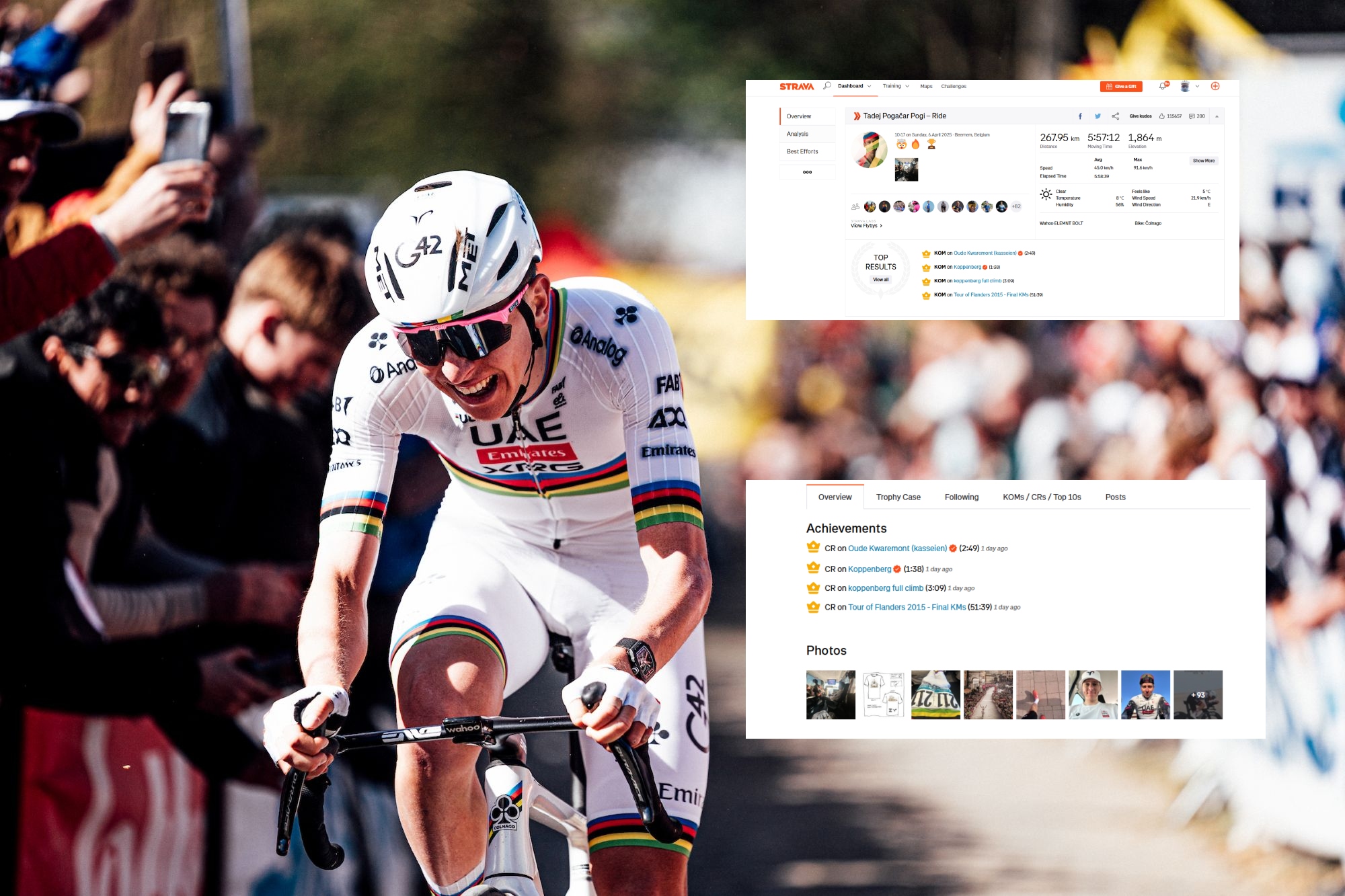 Tadej Pogačar bags handful of Strava KOMs in Tour of Flanders onslaught
Tadej Pogačar bags handful of Strava KOMs in Tour of Flanders onslaughtSlovenian tops the leaderboards on several verified segments but does not get flagged for efforts
By Tom Thewlis
-
 Tweets of the week: Forget the cobbles, Paris-Roubaix is now all about goats and chicanes
Tweets of the week: Forget the cobbles, Paris-Roubaix is now all about goats and chicanesIt's a Hell of the North special in this week's social media round-up
By Tom Davidson
-
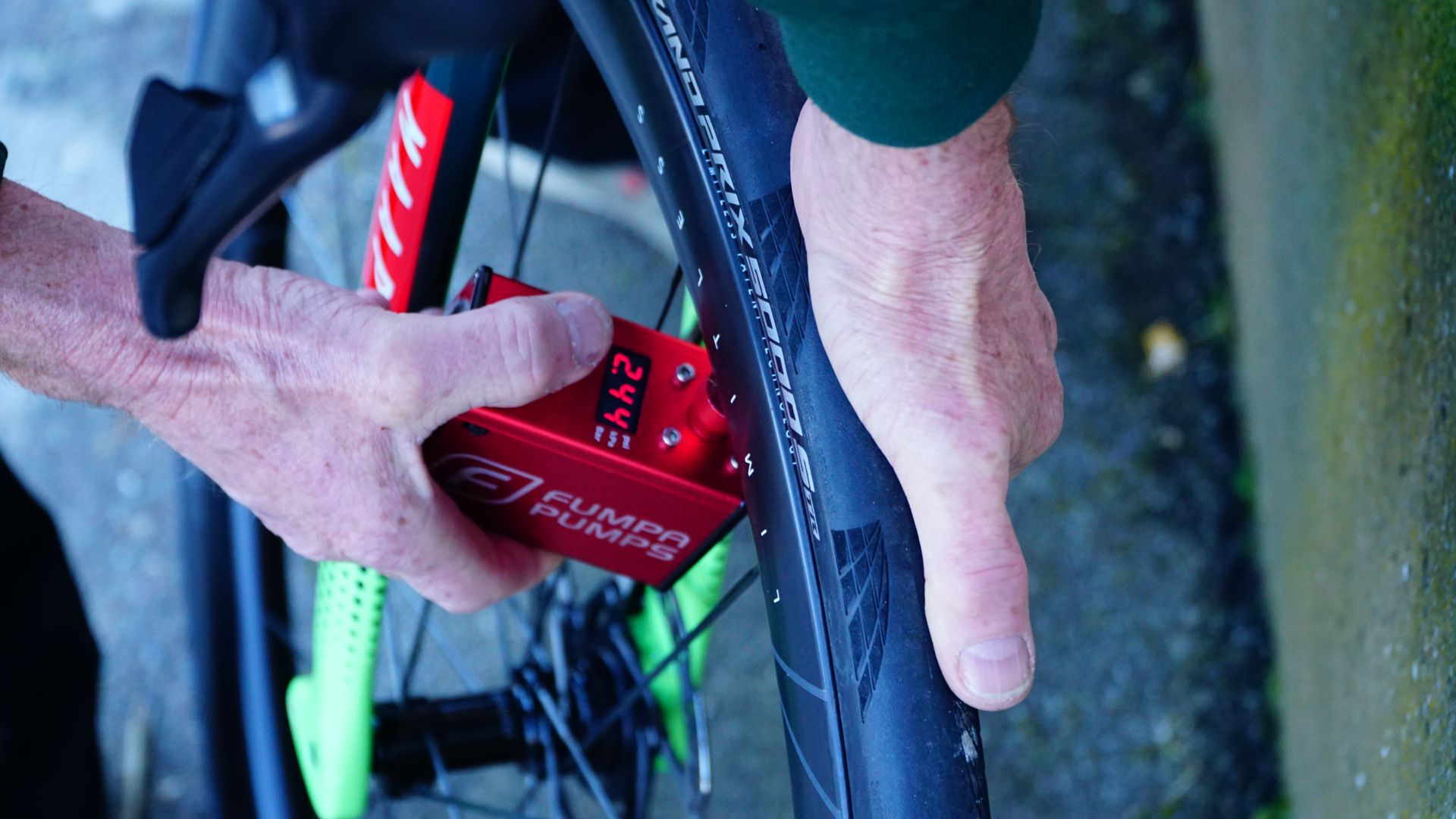 37psi in 32mm tyres: Why tyre pressures are getting lower at Paris-Roubaix
37psi in 32mm tyres: Why tyre pressures are getting lower at Paris-RoubaixAs wider tyres become commonplace, riders are running lower pressures at the Hell of the North
By Tom Davidson
-
 'I've never seen the cobbles as bad as this' - Inside one team's Paris-Roubaix recon
'I've never seen the cobbles as bad as this' - Inside one team's Paris-Roubaix reconTom Davidson joins British Continental team Lifeplus-Wahoo as they prepare for the most feared race of the season
By Tom Davidson
-
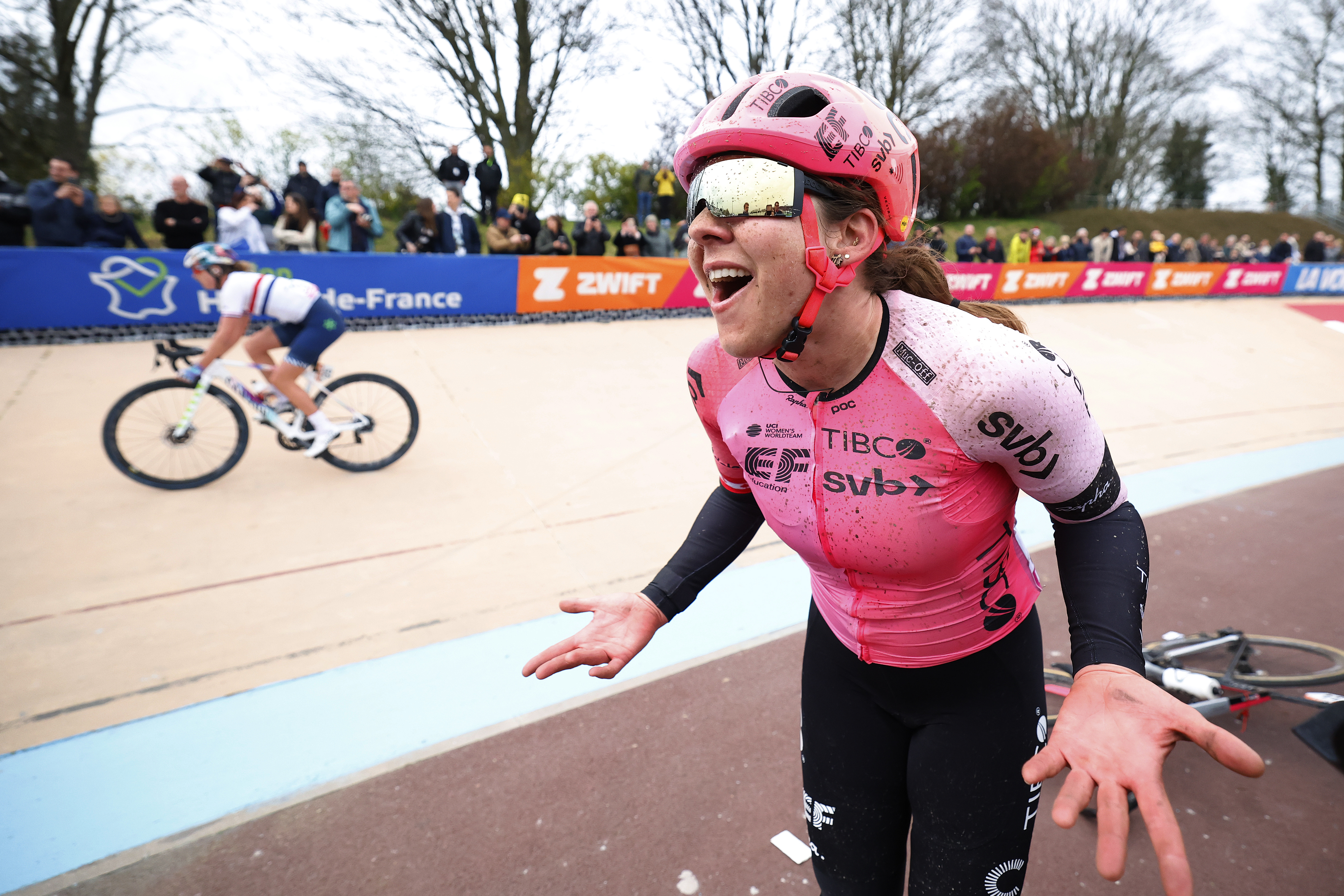 'I never wanted to be known as the TikTok cyclist' - how Alison Jackson wrote her legacy at Paris-Roubaix
'I never wanted to be known as the TikTok cyclist' - how Alison Jackson wrote her legacy at Paris-RoubaixThe Canadian tells Cycling Weekly how a day across the cobbles of northern France changed her career
By Tom Davidson
-
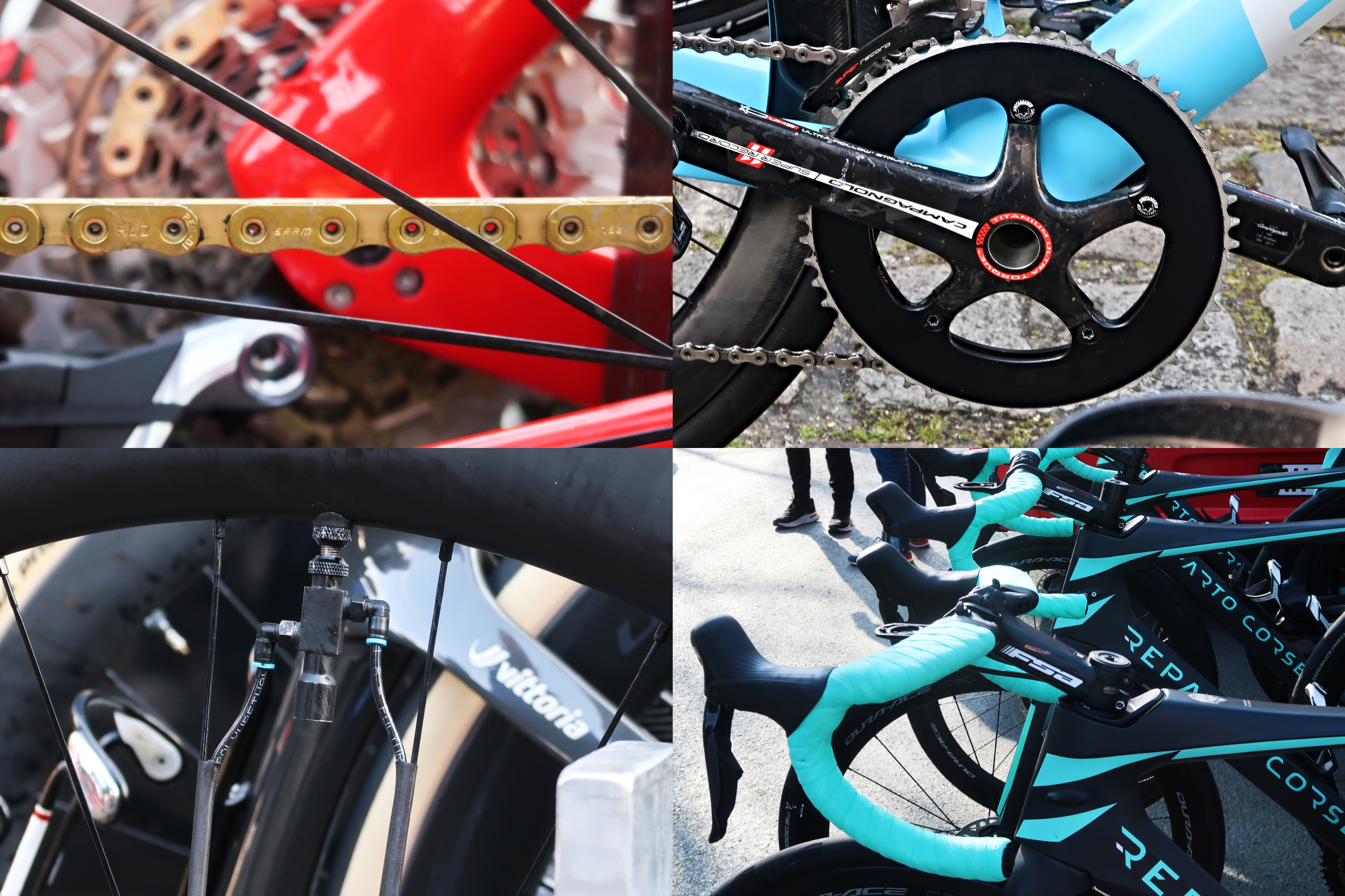 Seven tech insights spotted at Paris-Roubaix 2023
Seven tech insights spotted at Paris-Roubaix 2023From tyre pressure systems to old-school chainrings, here's what Cycling Weekly saw at the race
By Tom Davidson